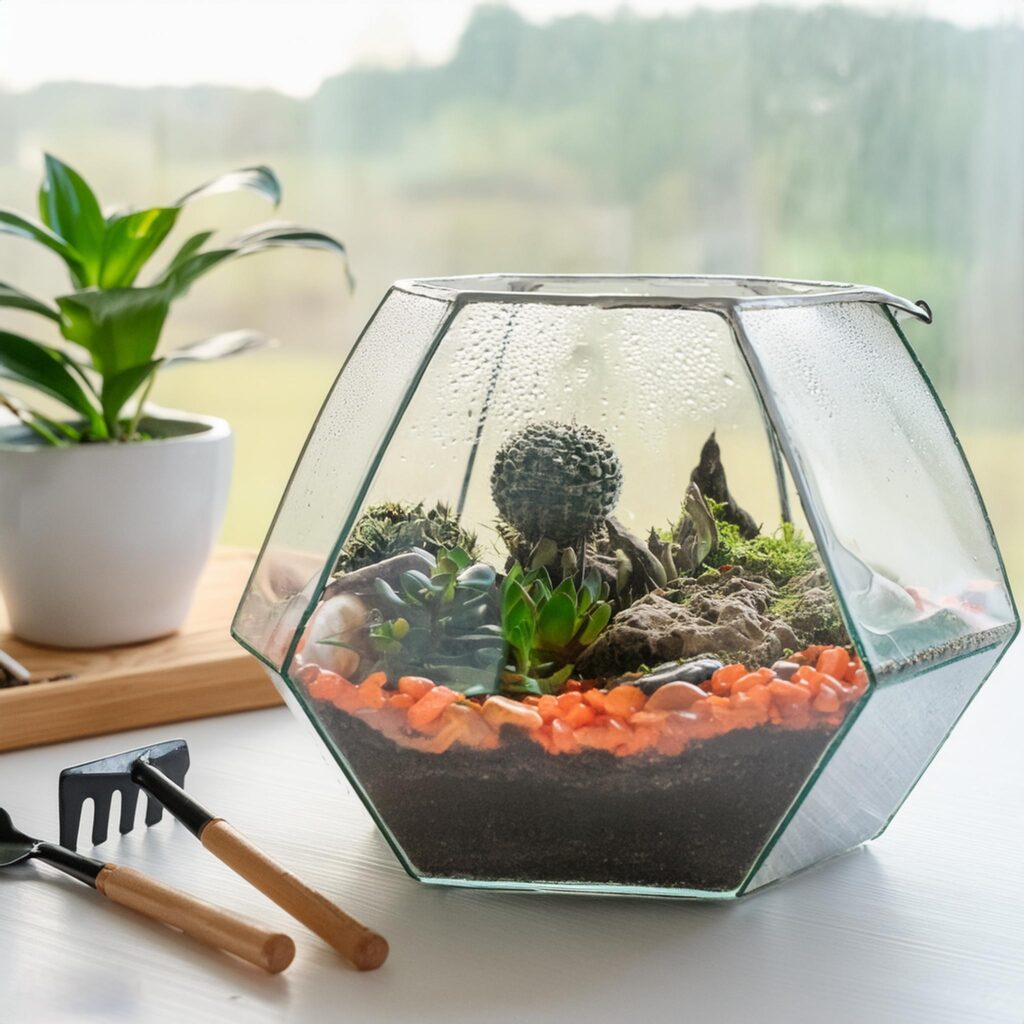
Terrariums, miniature ecosystems encapsulated within glass containers, are popular for their aesthetic appeal and low maintenance. One common question among enthusiasts and beginners alike is: “Will a terrarium hold water?” Understanding the water retention capabilities of a terrarium is crucial for maintaining the plants’ health and the microenvironment’s overall balance.
The Structure of a Terrarium
A terrarium typically consists of several layers, each serving a specific purpose:
- Drainage Layer: This is usually made of small rocks or pebbles and is placed at the bottom to prevent waterlogging. It allows excess water to drain away from the soil, preventing root rot.
- Charcoal Layer: Activated charcoal is often added above the drainage layer to filter the water and keep the terrarium fresh by absorbing toxins and odors.
- Soil Layer: This layer supports plant roots and provides nutrients. The type of soil used depends on the plants chosen.
- Plants and Decorations: The top layer consists of plants, moss, and decorative elements like stones or figurines.
Water Retention in Terrariums
The ability of a terrarium to hold water depends on several factors:
Closed vs. Open Terrariums
- Closed Terrariums: These are sealed containers that create a humid environment. The water cycle within a closed terrarium is self-sustaining. Water evaporates, condenses on the glass, and then returns to the soil. This cycle means that closed terrariums can effectively hold water, creating a high-humidity environment suitable for tropical plants.
- Open Terrariums: These containers have an opening that allows air exchange. While they do retain some moisture, the open design means water can evaporate more freely. Open terrariums are better suited for plants that prefer drier conditions, like succulents and cacti.
Material of the Container
- Glass: Most terrariums are made of glass, which is non-porous and will not absorb water. This ensures that any water added to the terrarium remains within the container, either in the soil or as part of the air’s humidity.
- Alternative Materials: Some terrariums might be made of plastic or other materials, which can have different properties regarding water retention. However, like glass, non-porous materials will generally hold water well.
Drainage and Watering Practices
- Proper Drainage: Ensuring a proper drainage layer prevents water from pooling at the bottom, which can lead to mold and root rot. A well-designed drainage system with a layer of rocks or pebbles and activated charcoal is essential for water management in a terrarium.
- Controlled Watering: Over-watering is a common mistake. In a terrarium, it’s better to water less frequently, allowing the plants to use the moisture already present. Observing the soil moisture and condensation on the glass can guide appropriate watering intervals.
Benefits of Water Retention
- Low Maintenance: Properly balanced terrariums require minimal watering, making them ideal for busy individuals or those new to plant care.
- Sustainable Environment: Especially in closed terrariums, the self-sustaining water cycle mimics natural ecosystems, providing a stable environment for plant growth.
Challenges of Water Retention
- Over-Watering: Too much water can lead to stagnant conditions, mold growth, and root rot. It’s essential to monitor and adjust watering practices.
- Humidity Control: For closed terrariums, maintaining the right level of humidity can be challenging. Overly humid conditions can harm plants not adapted to such environments.
In summary, whether a terrarium will hold water depends on its design, the materials used, and the plants it houses. Closed terrariums are highly effective at retaining water, creating a humid environment suitable for certain plants. Open terrariums, while still capable of holding water, allow for more evaporation, catering to plants that prefer drier conditions. Proper drainage, careful watering, and understanding the needs of the plants are key to maintaining a healthy terrarium. With the right approach, a terrarium can be a beautiful, low-maintenance addition to any space, providing a miniature window into the complexities of a balanced ecosystem.